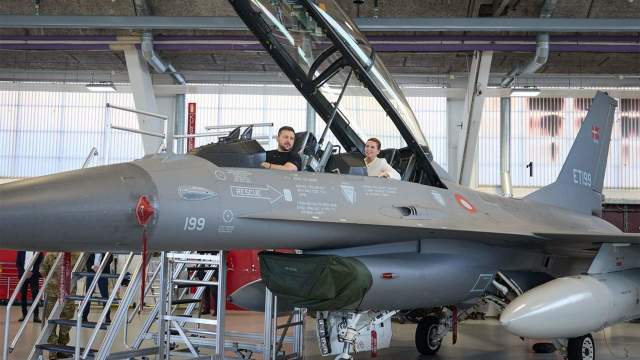What modifications of F-16 fighters will Kiev receive and how will it dispose of them
Several European countries have announced a decision to supply Ukraine with multi-purpose F-16 Fighting Falcon ("Fighting Falcon") fighters. Judging by the information available at the moment, the Netherlands plans to transfer 42 aircraft to Kiev, Denmark — 19, Norway — from 5 to 12. Ukrainian formations pin great hopes on these supplies. What modifications of the F-16 can enter service with the Ukrainian Air Force, what capabilities they have and how they will affect the combat capability of enemy aircraft, Izvestia investigated.
Conditional deliveries
Norwegian aircraft have been decommissioned for several years, and Ukraine will be handed over the machines that will remain in storage after the delivery of thirty-two F-16s for the Romanian Air Force. In the Netherlands and Denmark, the F-16 aircraft will be removed from service with their own Air Force in connection with the rearmament of the American F-35. In Denmark, the rearmament process is almost complete, and in the Netherlands it is just beginning. Accordingly, there is a high probability that the delivery of Dutch F-16s may last for 2024-2025.
Technically, other countries can also supply F-16 aircraft. For example, Belgium is also planning to rearm with the F-35, and in addition, these aircraft are in service in Portugal, Greece and in many Arab countries. Finally, almost 600 aircraft are in service with the United States itself, and this is not counting the hundreds of vehicles in storage. But the United States is not in a hurry to make statements about the supply of F-16s to Ukraine — they are letting their NATO allies go ahead across the ocean and are not in a hurry to part with "flying assets".
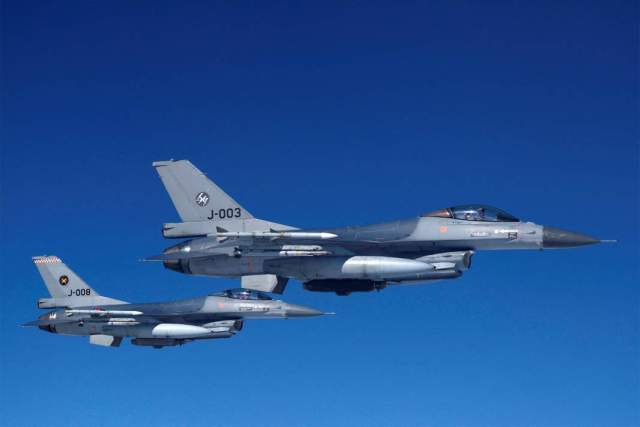
Dutch Air Force F-16 fighters
Image source: Photo: REUTERS/Piroschka van de Wouw
The condition for the delivery of aircraft from European countries is, first of all, the training and training of Ukrainian pilots for the operation of new machines for the AFU. The training process has already been launched, but even Ukrainian leaders call the term 6-8 months. That is, delivery is extremely unlikely before the spring of 2024. In addition, Ukraine should prepare the appropriate infrastructure for the operation of aircraft, primarily air bases.
And the most important condition of the Europeans: the APU should not use the received aircraft for strikes on Russian territory. It is not at all clear how this condition will be met. Probably, the Europeans will take the APU's word for it.
Aircraft capabilities
The Netherlands, Denmark and Norway have modifications of the F-16AM and F-16BM — these are cars produced in the 1970s and 1980s, which in the 1990s and 2000s underwent modernization under the MLU (Mid-Life Update) program. Four European countries, armed with F-16s, took part in this program.
European countries began receiving F-16s at the very end of the 1970s. Initially, 102 copies were delivered to the Netherlands (80 single-seat F-16A and 22 double-seat F-16B). In April 1978, the assembly of the machines was started at the Fokker plant. The first Dutch F-16 flew on May 3, 1979 under the control of test pilot Henk Temmen.
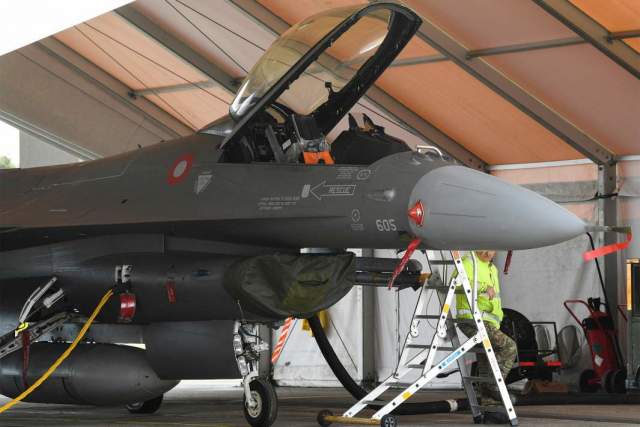
Danish Air Force F-16 aircraft
Image source: Photo: REUTERS/Fabian Bimmer
The Royal Danish Air Force received its 46 F-16A and 12 F-16B in the early 1980s. Aircraft assembly was carried out at the SABCA plant in Belgium. Norway received its first F-16s between January 1980 and June 1984. These were 60 F-16A and 12 F-16B from the Dutch Fokker assembly line. Later, Norway received more advanced American-built F-16B block 15.
The need to improve the first F-16 models arose already in the early 1990s, and a large MLU program was launched to re-equip the aircraft with updated avionics and weapons systems. By 2003, most of the F-16 European countries participated in it. One of the reasons for the "big modernization" was the slowdown in the development of the future replacement of F-16 aircraft under the JSF program (future F-35), which was caused by the end of the Cold War. It became clear that the F-16 aircraft could not be replaced at least until 2010, and their equipment was becoming obsolete.
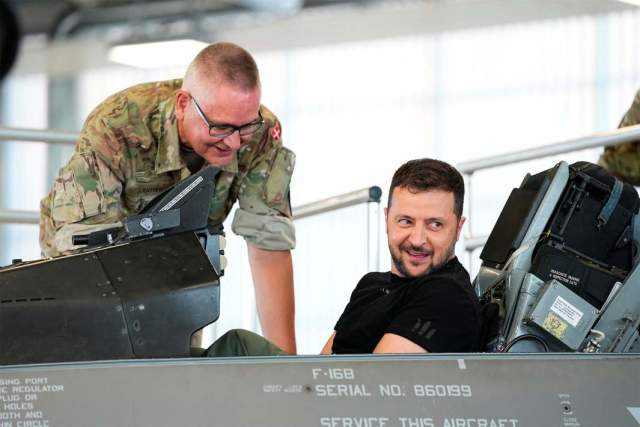
Zelensky in the F-16 plane
Image source: Photo: REUTERS/Mads Claus Rasmussen/Ritzau Scanpix
First of all, the modernization concerned equipment that is used in combat missions. The main computer of the combat control system was updated, which allowed to increase the speed and expand the combat capabilities of the aircraft. In addition, the weight of the computer and the volume occupied by it decreased.
Next, the Westinghouse AN/APG-66(V2) radar was upgraded — it became possible to accompany up to ten targets with firing simultaneously at six of them with new AIM-120 AMRAAM missiles. The ability to map the Earth's surface has been added to the radar functionality, the range has increased by 25%.
A new multifunctional display appeared in the cockpit, and the pilot received a helmet-mounted targeting system. The information transmission system has been improved. and the updated aircraft received a GPS navigation system.
Weapons complex
The main air combat weapon for all the first F-16s were the AIM-9L Sidewinder short-range missiles with infrared homing heads. But after modernization, they were supplemented by noticeably more advanced and long-range AIM-120 AMRAAM, in which the principle of "shot and forgot" is implemented. It is believed that these missiles can hit enemy aircraft before they reach the line of attack of the F-16 aircraft.
The updated F-16s can use AGM–65G Maverick guided air-to-ground missiles for ground targets. The range of guided bombs has also been expanded — GBU-12, GBU-24 and even GBU-31 JDAM.
F-16s are quite technologically advanced machines that can be serviced and repaired in Europe. Accordingly, it is quite likely that these aircraft will be modified for the use of European cruise missiles — such as Storm Shadow, SCALP ER and Taurus. Of course, the F-16 can also be used by American AGM-158 JASSM cruise missiles with a range of up to 400 km. It is likely that the US administration will receive a request from the APU for the supply of such missiles in addition to the European F-16.
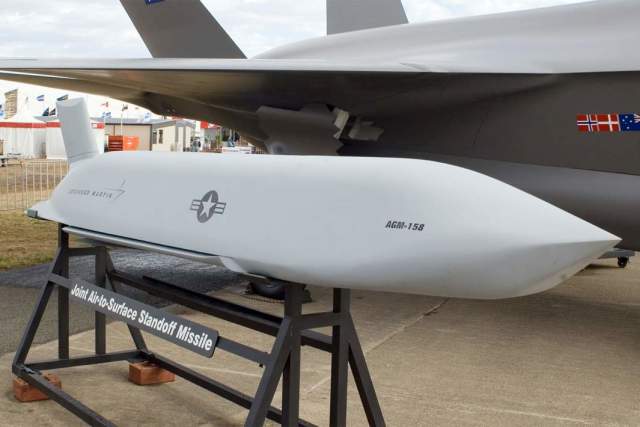
AGM-158 JASSM Cruise Missile
Image Source: Photo: Commons.wikimedia.org/Robert Frola
In general, it is likely that the F-16 supplied by the APU will be used primarily as carriers of long-range cruise missiles. This is a relatively safe and feasible task for inexperienced pilots of a new aircraft for the AFU.
But the gradual use of the F-16 in joint air defense with anti-aircraft complexes is also likely. And only after obtaining sufficient flight experience, the AFU pilots will risk appearing above the line of contact in the zone of a special military operation.
And of course, we must understand that the F-16s upgraded at the turn of the century are noticeably inferior to the Su-35S aircraft produced in the 2010-2020s in terms of equipment and weapon systems capabilities. So the outcome of their aerial duels can be predicted in advance.
Dmitry Kornev
